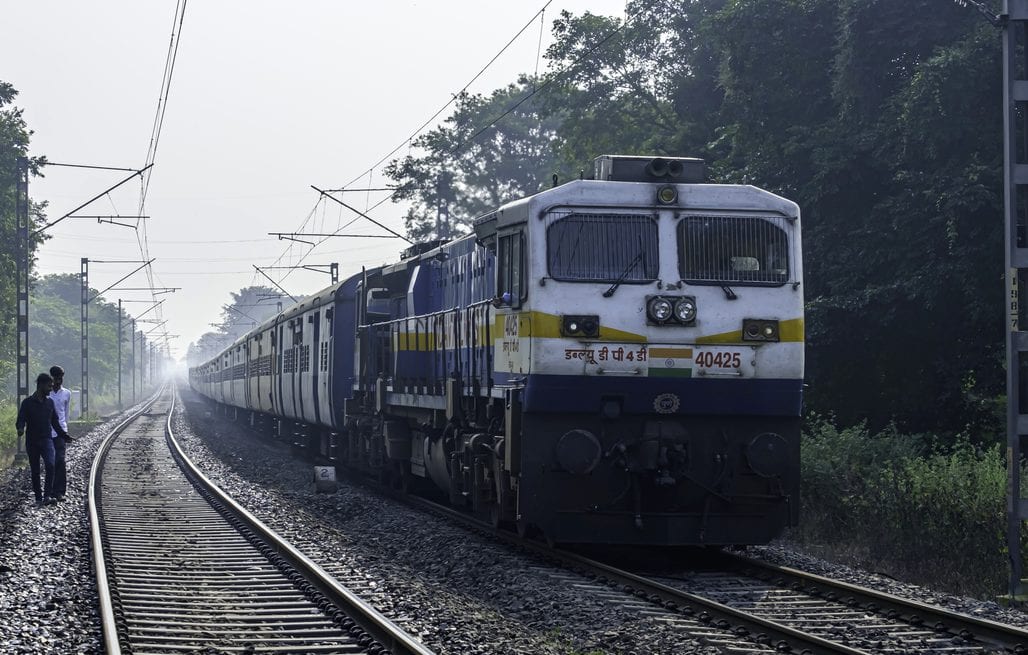
Railway's target of 9.6% spike in gross earnings can be a tough haul

A small hike in allocation, rehashed old schemes, and an overall capex – this is what Union Budget 2020-21 had in store for the Indian Railways (IR). Aiming at a 9.6% increase in gross earnings, the budgetary numbers revealed India’s national transporter continues to set lofty targets despite its failure to achieve big numbers in the past years.
Around ₹70,000 crore has been allocated for Indian Railways this year and its total capital expenditure is pegged at ₹1.61 lakh crore for 2020-21 against ₹1.56 lakh crore in the current fiscal.
Sitharaman’s big-ticket projects
In her budget speech on Sunday (February 1), Sitharman announced several initiatives including the setting up of large solar power plants alongside the rail tracks, more Tejas-type trains, a high-speed train between Mumbai to Ahmedabad, the long-awaited Bengaluru Suburban train project etc.
In order to build a seamless national cold supply chain for ‘perishables,’ the minister also proposed to set up a ‘Krishi Rail’ – through Public-Private Partnership arrangements. There will be refrigerated coaches in express and freight trains as well, she said. Earlier, this project was proposed by two Railways Ministers.
Rajaji Meshram, partner, EY India, said the Kisan trains on PPP model for carrying agricultural products would require some kind of viability gap funding as the haulage charges of agriculture products currently were low as compared to other products carried on railways. “It will also require logistics centres and warehousing infrastructure where agriculture products can be consolidated to get required train load,” he said.
Indian Railway’s precarious earnings
The Indian Railways is expecting to close the current fiscal with a shortfall in gross traffic receipts of over ₹10,000 crore, as per revised estimates revealed in the Union Budget 2020-21.
In 2018-19 too, the transporter had reported a shortfall of just over ₹4000 crore in gross traffic receipts at the revised estimate (RE) stage versus the target set out at the beginning of that year. But the actual shortfall was more than twice the gap at the RE stage, at nearly Rs 11,000 crore.
The Parliamentary Standing Committee report about the demand for grants for Indian Railways for 2019-20 shows that a shortfall in gross traffic receipts has been an annual affair, at least in the Modi regime. Though the earnings have risen each year, they have been short of the target set out at the beginning of each fiscal by a wide margin.
As for the IR’s operating ratio (How much it spends to earn each rupee) worsened during the NDA I term and remains a challenge even today.
Year after year, the Indian Railways (IR) has been struggling to meet its targets even as it has achieved more of its capex requirements through borrowings. This pattern is unlikely to change in the coming fiscal as the expectation that the government may enhance the capex for the IR by 16-18% has been belied.
The government has spoken about huge incremental investment in the IR, with Finance Minister saying capex over the next 11 years would be ₹50 lakh crore in her Budget speech last year.
This means almost tripling the average annual capex of the IR, which is usually around ₹1.5-1.6 lakh crore. Instead of the government pumping in more money into IR, the plan is to get at least two-thirds of this increased annual capex requirement from the private sector through PPP.
While the PPP mode of financing critical IR capex does raise questions on whether the government ultimately wants to privatise some of the Railways’ functions, one must remember that capex enhancement is crucial for the very survival of the national transporter.
Existing issues, solutions
The IR’s modal share for passengers transport and freight needs to increase for it to remain viable. Experts have said that the current share is just around 10% for passengers and around 30% for freight. In other words, 90% of passenger traffic in India is not using the IR for domestic travel and just a third of the freight being transported across the country uses the national transporter. To augment these numbers, higher capex is the need of the hour.
The existing IR network is congested, over utilised and one of the key reasons for this has been continued underinvestments through successive governments. But having said that, some hurdles remain in the ambitious push for getting around ₹2 lakh crore annual investment through the PPP route.
For example, the government needs to make it attractive for the private sector to invest in the IR and the first step towards this would be setting up an independent regulatory body. Today, the IR is both, the operator and the regulator, making it difficult for private investors to trust its systems and processes.
Anyway, the IR has already begun the process of offering some trains on busy routes to private operators in what many say is an attempt to privatise the national transporter. Again, for this experiment to be successful, the IR needs an independent regulator.


